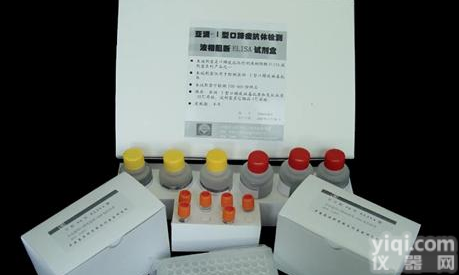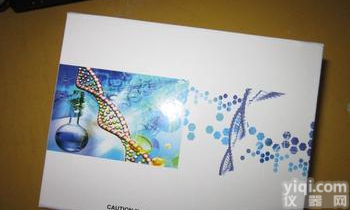北京Elisa试剂盒 价格,人沙眼衣原体(CT)ELISA Kit 说明书本公司长期经营Elisa试剂盒、实验耗材、仪器、酶、细胞等生物化学试剂。价格实惠,质量有保证。详细价格请咨询在线人员或来电咨询
北京elisa试剂盒 价格,人沙眼衣原体(CT)ELISA Kit 说明书
产品名称: 人沙眼衣原体抗原(CT)ELISA kit
英文名称: Human chlamydia trachomatis,CT ELISA kit
规格: 96T
种属: Human
待测物名称: chlamydia trachomatis (CT)
缩写: CT
反应时间: 1-5h
所需样本体积: 50-100ul
检测波长: 450nm
用途: For research use only. Not for diagnostic use.
精密度: Intra-assay Precision (Precision within an assay): CV%<8%
Three samples of known concentration were tested twenty times on one plate to assess.
Inter-assay Precision (Precision between assays): CV%<10%
Three samples of known concentration were tested in twenty assays to assess.
样本搜集及储存: Serum: Use a serum separator tube (SST) and allow samples to clot for two hours at room temperature or overnight at 4°C before centrifugation for 15 minutes at 1000 ×g. Remove serum and assay immediately or aliquot and store samples at -20°C or -80°C. Avoid repeated freeze-thaw cycles.
Plasma: Collect plasma using EDTA, or heparin as an anticoagulant. Centrifuge for 15 minutes at 1000 ×g at 2-8°C within 30 minutes of collection. Assay immediately or aliquot and store samples at -20°C or -80°C. Avoid repeated freeze-thaw cycles.
检测步骤: Bring all reagents and samples to room temperature before use. Centrifuge the sample again after thawing before the assay. It is recommended that all samples and standards be assayed in duplicate.
1. Prepare all reagents, working standards, and samples as directed in the previous sections.
2. Refer to the Assay Layout Sheet to determine the number of wells to be used and put any remaining wells and the desiccant back into the pouch and seal the ziploc, store unused wells at 4°C.
3. Add 100μl of standard and sample per well. Cover with the adhesive strip provided. Incubate for 2 hours at 37°C. A plate layout is provided to record standards and samples assayed.
4. Remove the liquid of each well, don't wash.
5. Add 100μl of Biotin-antibody (1x) to each well. Cover with a new adhesive strip. Incubate for 1 hour at 37°C. (Biotin-antibody (1x) may appear cloudy. Warm up to room temperature and mix gently until solution appears uniform.)
6. Aspirate each well and wash, repeating the process two times for a total of three washes. Wash by filling each well with Wash Buffer (200μl) using a squirt bottle, multi-channel pipette, manifold dispenser, or autowasher, and let it stand for 2 minutes, complete removal of liquid at each step is essential to good performance. After the last wash, remove any remaining wash Buffer by aspirating ordecanting. Invert the plate and blot it against clean paper towels.
7. Add 100μl of HRP-avidin (1x) to each well. Cover the microtiter plate with a new adhesive strip. Incubate for 1 hour at 37°C.
8. Repeat the aspiration/wash process for five times as in step 6.
9. Add 90μl of TMB Substrate to each well. Incubate for 15-30 minutes at 37°C. Protect from light.
10. Add 50μl of Stop Solution to each well, gently tap the plate to ensure thorough mixing.
11. Determine the optical density of each well within 5 minutes, using a microplate reader set to 450 nm. If wavelength correction is available, set to 540 nm or 570 nm. Subtract readings at 540 nm or 570 nm from the readings at 450 nm. This subtraction will correct for optical imperfections in the plate. Readings made directly at 450 nm without correction may be higher and less accurate.
结果计算: Using the professional soft "Curve Expert 1.3" to make a standard curve is recommended, which can be downloaded from our web.
Average the duplicate readings for each standard and sample and subtract the average zero standard optical density.
Create a standard curve by reducing the data using computer software capable of generating a four parameter logistic (4-PL) curve-fit. As an alternative, construct a standard curve by plotting the mean absorbance for each standard on the x-axis against the concentration on the y-axis and draw a best fit curve through the points on the graph. The data may be linearized by plotting the log of the CT concentrations versus the log of the O.D. and the best fit line can be determined by regression analysis. This procedure will produce an adequate but less precise fit of the data.
If samples have been diluted, the concentration read from the standard curve must be multiplied by the dilution factor.
全国咨询热线:010 -56429247 13488645491 梁经理 在线客服 QQ:774226171
 北京Elisa试剂盒 价格,人沙眼衣原体(CT)ELISA Kit 说明书
北京Elisa试剂盒 价格,人沙眼衣原体(CT)ELISA Kit 说明书
 人衣原体蛋白酶样活性因子试剂盒市场价,人衣原体蛋白酶样活性因子试剂盒
人衣原体蛋白酶样活性因子试剂盒市场价,人衣原体蛋白酶样活性因子试剂盒
 哪个Elisa试剂盒品Pai好人衣原体蛋白酶样活性因子(CPAF)ELISA试剂盒 ,96孔Elisa试剂盒,48孔Elisa试剂盒
哪个Elisa试剂盒品Pai好人衣原体蛋白酶样活性因子(CPAF)ELISA试剂盒 ,96孔Elisa试剂盒,48孔Elisa试剂盒
 人(Cpn-Ab)Elisa试剂盒厂家,肺炎衣原体抗体Elisa试剂盒价格
人(Cpn-Ab)Elisa试剂盒厂家,肺炎衣原体抗体Elisa试剂盒价格
 Elisa试剂盒之人肺炎衣原体抗体(Cpn-Ab)Elisa试剂盒
Elisa试剂盒之人肺炎衣原体抗体(Cpn-Ab)Elisa试剂盒
 Biomatik 酶联免疫试剂盒,用于肺炎衣原体(Cpn)抗体(免疫球蛋白M) ELISA Kit for Chlamydia pneumoniae (Cpn) antibody (IgM) (EKC01060)
Biomatik 酶联免疫试剂盒,用于肺炎衣原体(Cpn)抗体(免疫球蛋白M) ELISA Kit for Chlamydia pneumoniae (Cpn) antibody (IgM) (EKC01060)
 Elisa试剂盒之人沙眼衣原体抗体(CT)IgGElisa试剂盒
Elisa试剂盒之人沙眼衣原体抗体(CT)IgGElisa试剂盒
 Y10930A Elisa试剂盒 (CT)人沙眼衣原体抗体
Y10930A Elisa试剂盒 (CT)人沙眼衣原体抗体
 人沙眼衣原体抗体(CT)ELISA 试剂盒 人沙眼衣原体抗体(CT)ELISA 试剂盒供应商
人沙眼衣原体抗体(CT)ELISA 试剂盒 人沙眼衣原体抗体(CT)ELISA 试剂盒供应商
 人沙眼衣原体抗体试剂盒市场价,西安人沙眼衣原体抗体试剂盒
人沙眼衣原体抗体试剂盒市场价,西安人沙眼衣原体抗体试剂盒
 人沙眼衣原体抗体试剂盒市场价,人沙眼衣原体抗体试剂盒
人沙眼衣原体抗体试剂盒市场价,人沙眼衣原体抗体试剂盒
 CT 沙眼衣原体抗体试剂盒 ,人沙眼衣原体抗体(CT)ELISA试剂盒
CT 沙眼衣原体抗体试剂盒 ,人沙眼衣原体抗体(CT)ELISA试剂盒